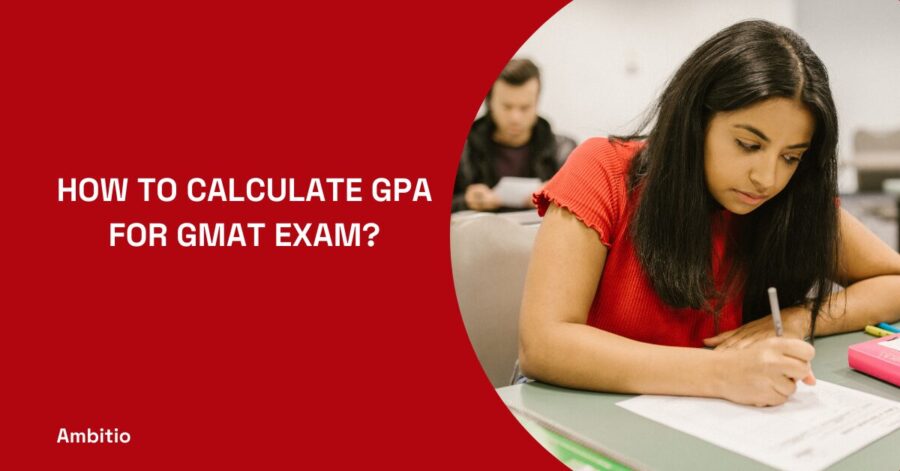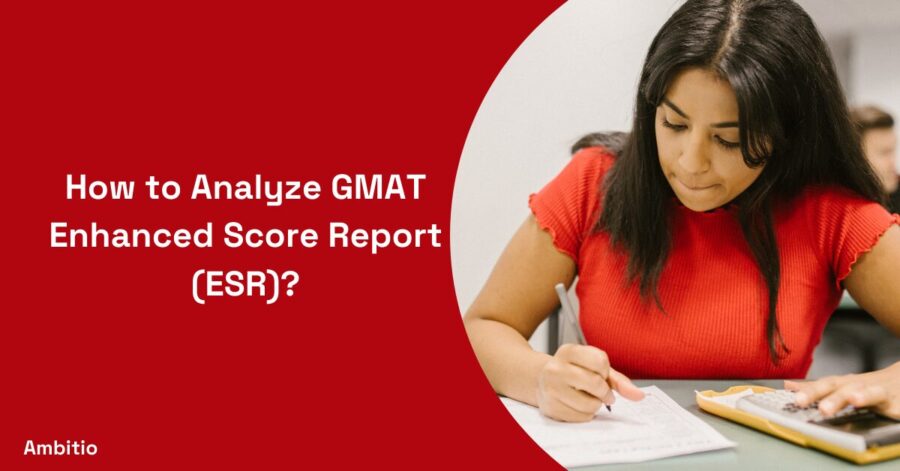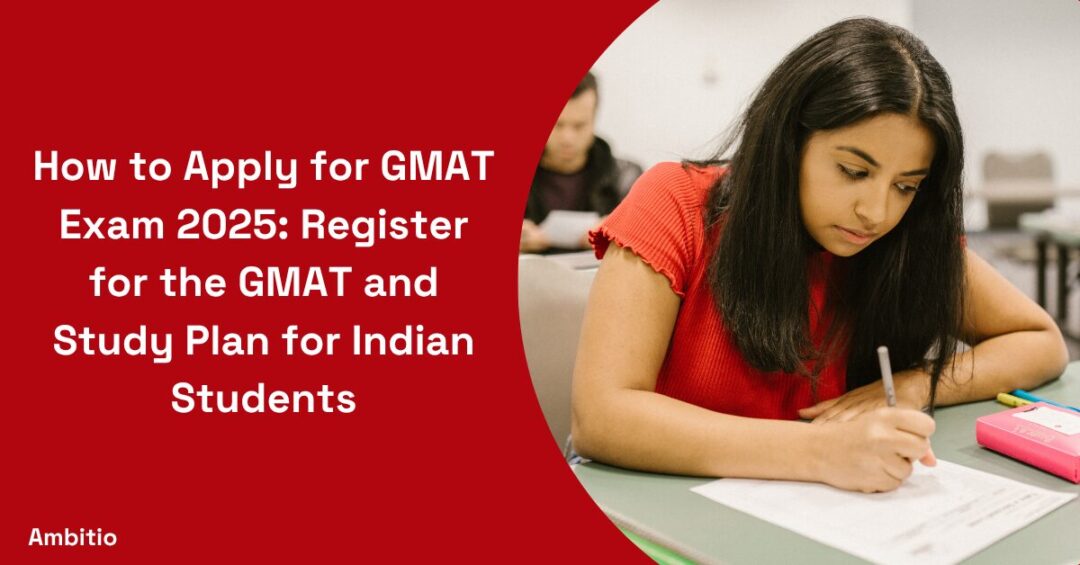3 September 2024
8 minutes read
GMAT Problem Solving Questions: GMAT Quant

Key Takeaways
- GMAT Quant success hinges on strategy and quick thinking, not just math skills.
- Global GMAT acceptance opens doors to international MBA programs and career opportunities.
- Effective problem-solving techniques include understanding the question, time management, and estimation.
- Consistent practice with varied resources is crucial for mastering GMAT problem-solving questions.
The GMAT Quant section isn’t just about math – it’s a test of quick thinking and strategy. Many test-takers get caught up in complex calculations, missing the forest for the trees. This common pitfall can tank scores and crush MBA dreams.
Here’s the thing: you don’t need to be a math whiz to ace GMAT problem solving questions. What you need is a game plan. By learning to spot patterns, use estimation, and manage your time wisely, you can turn this challenging section into your secret weapon. It’s all about working smarter, not harder.
How to Master GMAT Problem Solving
The GMAT isn’t just for US business schools. Many countries worldwide recognize and accept GMAT scores for MBA admissions. This opens up a world of opportunities for aspiring business leaders. Here are five key reasons why the global acceptance of GMAT matters:
International Options
With your GMAT score, you can apply to top MBA programs across the globe. Whether you’re eyeing a school in Europe, Asia, or beyond, your GMAT problem solving skills can help you stand out. This global reach means you’re not limited to just one country or region for your MBA journey.
Career Flexibility
A globally recognized GMAT score gives you career flexibility. You can solve the problem of location-based job hunting. Many international companies look for candidates with strong quantitative skills, which your GMAT score demonstrates. This can open doors to opportunities that multiply, and you might not have considered them before.
Skill Validation
The GMAT’s rigorous problem solving questions aren’t just about getting the correct answer choices. They showcase your ability to handle complex data sufficiency problems, use logic, and make decisions under pressure. These are skills that translate across cultures and industries, making you a valuable candidate wherever you go.
Networking Opportunities
Studying abroad exposes you to a diverse group of future business leaders. Your shared experience with GMAT practice tests and geometry equations becomes a conversation starter. This international network can be invaluable throughout your career, offering insights into global markets and practices.
Personal Growth
Taking on the challenge of GMAT problem solving in a global context pushes you out of your comfort zone. You’ll encounter new perspectives, from tackling complex integer equations to understanding diverse business practices. This experience can help you grow not just professionally, but personally as well.
Tips to Tackle GMAT Quantitative Problem Solving Questions

Mastering GMAT problem solving questions is crucial for a top score. These tips will help you approach quantitative problems more effectively and boost your performance on test day.
Understand the Question
Before diving into calculations, make sure you grasp what the problem is asking. GMAT quantitative questions can be tricky, so take a moment to identify the key information. This step alone can often lead you to the correct answer more quickly.
Practice Smart Time Management
Don’t get stuck on one tough problem. The GMAT doesn’t care if you can solve every question perfectly. It’s better to answer more problems reasonably well than to spend too much time on a single difficult equation. Use practice tests to improve your pacing.
Use Process of Elimination
When faced with multiple answer choices, try to eliminate the ones that clearly don’t work. This strategy can help you solve the problem even if you’re not 100% sure. Remember, in GMAT problem solving, you only need to find the best answer among the options given.
Master Key Concepts
Focus on core areas like geometry, integer properties, and data sufficiency. These topics appear frequently in GMAT quantitative questions. The more comfortable you are with these concepts, the faster you’ll be able to tackle related problems and find the correct answer.
Learn to Estimate
Not every GMAT problem solving question requires exact calculations. Often, estimation is key. Practice quick mental math and learn to approximate when you multiply or divide. This skill can save you precious time on the quantitative section and help you spot incorrect answer choices more easily.
Sample GMAT Problem Solving Practice Questions
Here are some effective GMAT official advanced questions for practice to brush up your skills, make Quant your strong point, and gain a competitive edge in the exam.
Problem 1
A store sells 3 different types of pens: blue, black, and red. The store sold 20 blue pens at $1.50 each, 15 black pens at $2.00 each, and 10 red pens at $1.75 each. The store also sells 2 different types of notebooks: small and large. The store sold 5 small notebooks at $3.00 each and 3 large notebooks at $5.00 each. The store offers a 10% discount on all purchases over $100. What is the total revenue from pen and notebook sales after the discount?
Explanation
To calculate the total revenue after the discount, we need to first calculate the total revenue before the discount, and then apply the 10% discount if the total exceeds $100.
Solution
Total revenue before discount:
Pen sales: $77.50
Notebook sales: $30.00
Total revenue before discount = $77.50 + $30.00 = $107.50
Since the total revenue before discount exceeds $100, we apply the 10% discount:
Discount amount = $107.50 × 0.10 = $10.75
Total revenue after discount = $107.50 – $10.75 = $96.75
Problem 2
A store sells 3 different types of pens: blue, black, and red. The store sold 20 blue pens at $1.50 each, 15 black pens at $2.00 each, and 10 red pens at $1.75 each. The store also sells 2 different types of notebooks: small and large. The store sold 5 small notebooks at $3.00 each and 3 large notebooks at $5.00 each. The store offers a 5% discount on all purchases over $50. What is the total revenue from pen and notebook sales after the discount?
Explanation
To calculate the total revenue after the discount, we need to first calculate the total revenue before the discount, and then apply the 5% discount if the total exceeds $50.
Solution
Total revenue before discount:
Pen sales: $77.50
Notebook sales: $30.00
Total revenue before discount = $77.50 + $30.00 = $107.50
Since the total revenue before discount exceeds $50, we apply the 5% discount:
Discount amount = $107.50 × 0.05 = $5.38
Total revenue after discount = $107.50 – $5.38 = $102.12
Problem 3
A store sells 3 different types of pens: blue, black, and red. The store sold 20 blue pens at $1.50 each, 15 black pens at $2.00 each, and 10 red pens at $1.75 each. The store also sells 2 different types of notebooks: small and large. The store sold 5 small notebooks at $3.00 each and 3 large notebooks at $5.00 each. The store offers a 15% discount on all purchases over $150. What is the total revenue from pen and notebook sales after the discount?
Explanation
To calculate the total revenue after the discount, we need to first calculate the total revenue before the discount, and then apply the 15% discount if the total exceeds $150.
Solution
Total revenue before discount:
Pen sales: $77.50
Notebook sales: $30.00
Total revenue before discount = $77.50 + $30.00 = $107.50
Since the total revenue before discount does not exceed $150, no discount is applied.
Total revenue after discount = $107.50
Problem 4
A store sells 3 different types of pens: blue, black, and red. The store sold 20 blue pens at $1.50 each, 15 black pens at $2.00 each, and 10 red pens at $1.75 each. The store also sells 2 different types of notebooks: small and large. The store sold 5 small notebooks at $3.00 each and 3 large notebooks at $5.00 each. The store offers a 20% discount on all purchases over $200. What is the total revenue from pen and notebook sales after the discount?
Explanation
To calculate the total revenue after the discount, we need to first calculate the total revenue before the discount, and then apply the 20% discount if the total exceeds $200.
Solution
Total revenue before discount:
Pen sales: $77.50
Notebook sales: $30.00
Total revenue before discount = $77.50 + $30.00 = $107.50Since the total revenue before discount does not exceed $200, no discount is applied.
Total revenue after discount = $107.50
Problem 5
A store sells 3 different types of pens: blue, black, and red. The store sold 20 blue pens at $1.50 each, 15 black pens at $2.00 each, and 10 red pens at $1.75 each. The store also sells 2 different types of notebooks: small and large. The store sold 5 small notebooks at $3.00 each and 3 large notebooks at $5.00 each. The store offers a 10% discount on all purchases over $100 and a 5% discount on all purchases over $50. What is the total revenue from pen and notebook sales after the discounts?
Explanation
To calculate the total revenue after the discounts, we need to first calculate the total revenue before the discounts, and then apply the discounts based on the given conditions.
Solution
Total revenue before discounts:
Pen sales: $77.50
Notebook sales: $30.00
Total revenue before discounts = $77.50 + $30.00 = $107.50
Since the total revenue before discounts exceeds $100, we apply the 10% discount:
Discount amount = $107.50 × 0.10 = $10.75
Total revenue after 10% discount = $107.50 – $10.75 = $96.75
Since the total revenue after the 10% discount is still greater than $50, we apply the 5% discount:
Discount amount = $96.75 × 0.05 = $4.84
Total revenue after 5% discount = $96.75 – $4.84 = $91.91
Therefore, the total revenue from pen and notebook sales after the discounts is $91.91.
GMAT Problem Solving: Strategies and Resources

Preparing for the GMAT exam, especially the quantitative reasoning section, can be daunting. But if you crack it and get an impressive GMAT score, you can even get impressive GMAT scholarship as well. Here’s how to tackle GMAT math questions effectively:
Start solving free practice questions from GMAT Club and mba.com. These platforms offer problem solving problems that mimic the actual GMAT exam. Regular math practice is the best way to prepare for the GMAT quantitative section. Also keep in mind that GMAT is an adaptive test.
Leverage free GMAT course resources for your test prep. The more you practice, the better you’ll handle questions that make up this standardized test. Remember, you won’t have a calculator for the quantitative reasoning section.
When trying to solve a particular problem, consider multiple ways to solve it. Sometimes, a back solving approach or algebraic method works best. The best approach often depends on the question type – whether it’s easy to solve or more complex.
Time management is crucial. Don’t get stuck on time-consuming questions. If a problem doesn’t work out nicely, move on and return if time allows. Every question carries equal weight, so focus on answering as many as possible. GMAT preparation time is subjective, so understand your strengths and limitations and come to a conclusion.
For multiple choice questions, eliminate obviously wrong answers. Often, the first answer that makes sense is correct. This strategy can help you solve GMAT problem solving questions more efficiently. Also, choose the best GMAT books for your prep.
Practice mental math, like quickly finding half of the total or doing simple multiplication. This skill is essential since you probably want to avoid wasting time on calculations you can do in your head. This is especially true for GMAT for non-math background.
Remember, not every problem will be easy. Some questions are designed to challenge your analytical and mathematical skills. Stay calm and apply your strategies consistently.
By following these tips and using resources like free GMAT practice tests, you’ll be well-prepared to tackle problem solving problems on exam day. Also, make it a point to understand why GMAT exam is so important and what is the importance of the GMAT exam. Whether you’re just starting out or fine-tuning your skills, consistent practice is key to mastering GMAT problem solving.
Conclusion
GMAT problem solving is a skill you can develop with practice and strategy. There are plenty of benefits for GMAT as well. Use the tips and resources we’ve discussed to boost your performance. Remember, each question you tackle makes you stronger. Stay persistent, trust your preparation, and approach the exam with confidence. With dedication, you’ll be well-equipped to ace the quantitative section and move closer to your MBA goals. Good luck on your GMAT journey!
Master the GMAT and pave your way to MBA excellence with Ambitio. Our platform offers in-depth study materials, practice questions, and tailored feedback, focusing on the areas you need to strengthen to boost your score and secure your place at a top business school.
FAQs
How many types of questions are there in the GMAT Quantitative section?
Problem Solving and Data Sufficiency as key areas are are indeed the two main types of questions in the GMAT Quantitative section.
What’s the most effective strategy for multiple-choice questions in GMAT Quant?
Use the process of elimination to rule out obviously wrong answers. Often, the first answer that makes sense is correct. This strategy can help solve problems more efficiently.
How can I improve my estimation skills for GMAT Problem Solving?
Practice quick mental math and learn to approximate when you multiply or divide. The blog suggests that this skill can save time and help in spotting incorrect answer choices more easily.
Are GMAT scores accepted by business schools worldwide?
Yes, many countries worldwide recognize and accept GMAT scores for MBA admissions, opening up international options for aspiring business leaders.
Can I use a calculator during the GMAT Quantitative section?
No, calculators are not allowed in the GMAT Quantitative section. The blog mentions the importance of practicing mental math and quick estimation skills to compensate for this.
How important is time management in the GMAT Quant section?
Time management is crucial. The blog emphasizes not getting stuck on difficult problems and answering as many questions as possible. It’s better to answer more problems reasonably well than to spend too much time on a single difficult equation.
What’s the best way to prepare for GMAT Problem Solving questions?
The best approach is to practice regularly using free resources like GMAT Club and mba.com, focus on core concepts like geometry and integer properties, and work on time management skills. Consistent practice with a variety of question types is key.

You can study at top universities worldwide!
Get expert tips and tricks to get into top universities with a free expert session.
Book Your Free 30-Minute Session Now! Book a call now




























